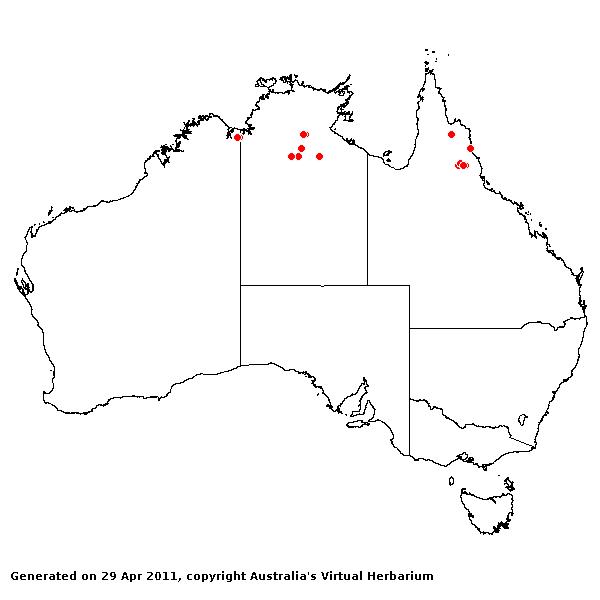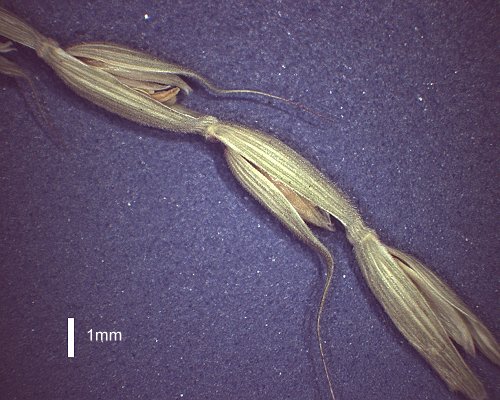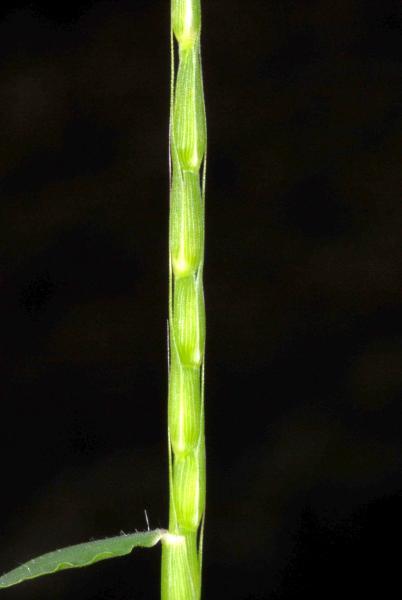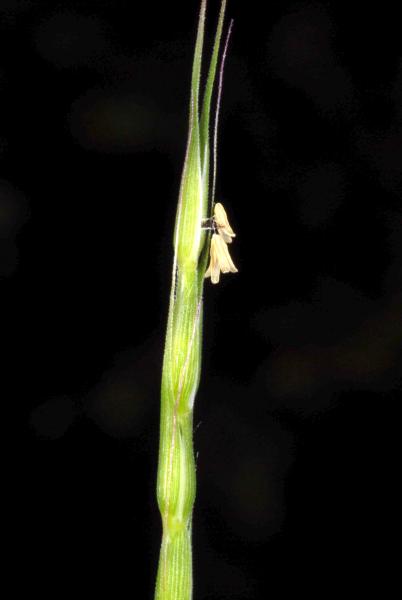Lepturus xerophilus Domin. Biblioth.
Bot. 85: 412 (1915).
Classification. (GPWG 2001) : Subfamily
Chloridoideae. Cynodonteae.
Type of Basionym or Protologue Information: ST: Domin s.n., Feb 1910,
Australia: Queensland: Nord-Queensland, Karsthügel (Blufff) bei Chillagoa ST: Domin
s.n., Feb 1910, Australia: Queensland: Boonmoo.
Key references
(books and floras): [2002] D.Sharp & B.K.Simon, AusGrass, Grasses of
Australia.
Habit. Annual.
Stolons present. Culms geniculately ascending, 30–90 cm tall. Ligule a fringed
membrane, a ciliolate membrane. Leaf-blades flat or convolute, 2.5–11 cm long,
0.5–5.5 mm wide. Leaf-blade surface glabrous or indumented.
Inflorescence.
Inflorescence solid, a spike. Racemes 1. Rhachis fragile at the nodes.
Spikelets.
Spikelets sessile. Fertile spikelets 1 or more flowered, with 1 fertile floret,
comprising 2 fertile floret(s), with a barren rachilla extension, lanceolate,
dorsally compressed, 4–7 mm long.
Glumes. Glumes
firmer than fertile lemma. Upper glume lanceolate, 4–7 mm long, cartilaginous
or coriaceous, without keels, 7–11 -nerved. Upper glume surface scabrous,
glabrous or indumented. Upper glume apex awned.
Florets.
Fertile lemma 2.8–4 mm long, without keel, 3 -nerved. Lemma surface indumented. Lemma apex entire. Palea
2 -nerved. Lodicules present. Anthers 3. Grain 2 mm long.
Continental
Distribution: Australasia.
Australian
Distribution: Western Australia, Northern Territory, Queensland.
Western Australia:
Gardner. Northern Territory: Darwin & Gulf. Queensland: Cook,
North Kennedy.
Notes.
L. xerophilus differs from the common coastal species L. repens
in the usually much more densely hairy leaf blades, the constrictions in the
rachis at points of disarticulation, the much longer awns on the glume, and the
spikelets consistently having 2 well-developed florets.
Endemic;
very sporadic from the NE Kimberley, W.A. to the base of Cape York, Qld.
Uncommon, growing on limestone in partial shade; designated rare.





